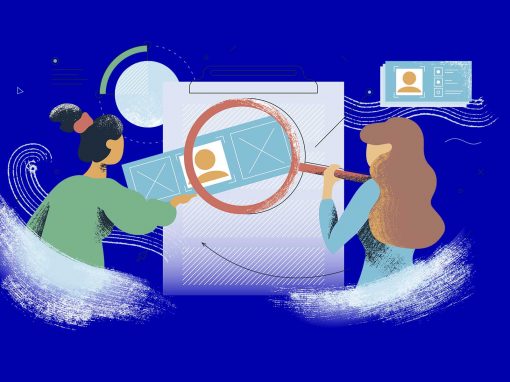I was answering the question in the title and here’s what I had to say.
I run an experiences design agency that helps SaaS CEOs reduce user churn. I’ve looked around at the most successful things that “work”, then looked at what worked on me (as I was judging them through a very demanding and picky lens) and on other picky users. What I noticed over years and years is that all these companies created experiences for their users.
I’m currently building the bible of how experiences are created and developed. To do so, I started writing daily since December 2018. Here’s my definition of an experience. At the time of writing, it’s this:
Experience
/ɪkˈspɪərɪəns,ɛkˈspɪərɪəns/
the reverse-engineering of the totality of features, content and stimuli that a user submerges itself into, which results in:
1. them manifesting a variety of feelings towards the company/product
2. adding to the process of brand equity building
3. keeping users engaged into the created realm.
So an engaged SaaS user is one whose attention is drawn into the designed experience. You know experiences as well, you might have not called them like that but surely you’ve been immersed into one at one point. If you’ve ever visited an Apple Store, that was an experience (more so if you’ve purchased something).
But just like books, experiences can be poor or good. It’s not hard to create one — it is, though, to refine it. To draw a parallel, anyone can say they’re a basketball player but very few play in the NBA.
To get back to the main question, an engaged SaaS user is one who respects the definition given above. A beautiful consequence of designing an experience for a user is the one concept that’s at the base of every successful business: word of mouth.
Word of mouth is king. Most of the times you yourself tell a friend about a product, it is because an experience was tailored. Sure, some things you recommend have utilitarian value but more often than not it was more than that. You felt some way. You noticed something. A certain aspect managed to get you to spend the very-limited amount of attention coins you’ve got every second.
“Yes but that’s only for consumers, Daniel…”
That’s one of the main objections I hear from SaaS people. Especially if they’re building a B2B SaaS company.
Here’s what I have to say about that: in B2B, it’s still people who make the decisions. What I said so far applies the same way to the decision-makers — obviously, an experience will probably be different when you’re not making something that’s meant to be sold at scale. But that doesn’t mean an experience can not be prepared for fewer people.
Here’s the caveat that applies to B2B, B2C or B2Aliens: an experience just amplifies the utilitarian layer of value. If that’s not there, then an experience will look like a cheap trick — and it’d be rightfully called so.
A very trivial answer to your question could have been “just offer them value” but I reckon that’s easier to be thought of. My answer would come in handy after that question is asked but I guess every business person will handle the value question first.
By the way! Yesterday I made a page (that will be constantly updated) with my best-written pieces so far. For today’s piece, I’d recommend #5 for the extended article when it comes to defining experiences!
About Ch Daniel
I run chagency, an experiences design agency that specialises on helping tech CEOs reduce user churn. We believe experiences are not only the reason why users choose not to leave but also what generates word of mouth. We’re building a credo around this belief.
If I’ve brought you any kind of value, follow me and get in touch here: LinkedIn | Twitter | Email
I’ve also created an infinitely-valuable app for sneaker/fashion enthusiasts called Legit Check that impacted hundreds of thousands over millions of times – check it out at chdaniel.com/app
Please share this with someone and subscribe to our newsletter!— helps us keep pumping content?
Illustration Credits: Mike Winkelmann




